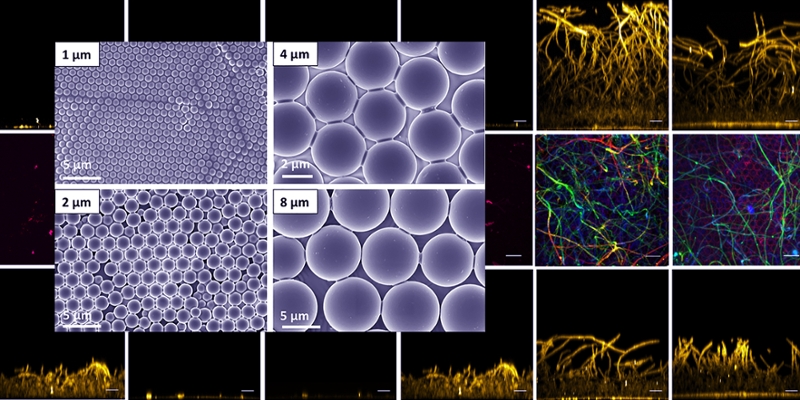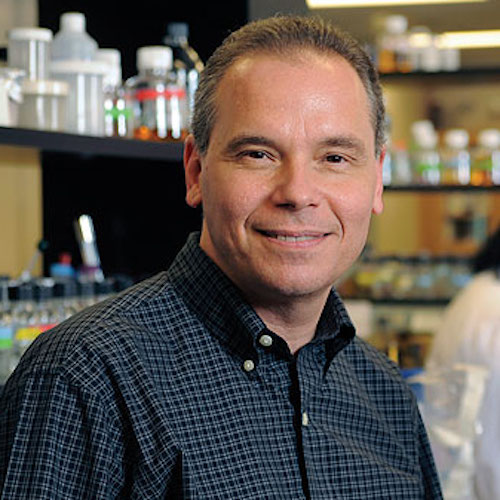Biofilm-Preventive Surface Topography

Microbes have evolved to grow on surfaces, perhaps because fixed substrates support development of cooperative interacting microbial communities, or biofilms. Biofilm formation is the source of a spectrum of problems in society, including the fouling of ship hulls and pipes, and the increased risk of infection for people with implanted medical devices. Implanted devices such as stents, pacemakers, and artificial joints are common, and device-associated infections cannot be treated successfully with common antibiotics.
A recent study that addresses this issue comes from the Mitchell lab here in the Department of Biological Sciences at CMU and the Ducker lab in the Department of Chemical Engineering at Virginia Tech. The goal was to determine whether surface topography might affect the ability of the fungal pathogen Candida albicans to produce an adherent biofilm.
The Ducker lab fabricated surfaces with arrays of hemispherical silica particles, and Ph.D. student Katie Lagree assayed biofilm formation on the surfaces with two different C. albicans clinical isolates. Biofilm formation varied considerably, depending on the diameter of the silica hemispheres.Diameters of 4.0–8.0 μm supported substantial biofilm formation; diameters of 0.5–2.0 μm did not. The results indicate that topographic coatings hold promise as a preventive approach to reduce C. albicans biofilm infections.



